Have you ever wondered, "How long does attic insulation last?" This question is more crucial than it might seem at first glance. Proper attic insulation, facilitated by regular insulation service, is key to maintaining your home's temperature, lowering energy bills, and ensuring overall comfort. But like everything in your home, insulation doesn't last forever.
- Quick Answer: How Long Does Attic Insulation Last?
- Extending the Lifespan of Your Attic Insulation
- The Critical Role of Attic Insulation in Your Home
- Benefits of Effective Attic Insulation
- How Insulation Affects Home Energy Efficiency
- Types of Attic Insulation and Their Expected Lifespan
- Fiberglass Insulation: Pros and Cons
- Cellulose Insulation: Pros and Cons
- Spray Foam Insulation: Pros and Cons
- Reflective and Radiant Barriers: Pros and Cons
- Pros of Fiberglass Insulation:
- Cons of Fiberglass Insulation:
- Factors Influencing the Lifespan of Your Attic Insulation
- Environmental Impact: Moisture and Temperature
- Installation Quality: The Foundation of Insulation Longevity
- Maintenance and Upkeep: Prolonging Insulation Life
- Signs That Your Attic Insulation Needs Replacing
- Increased Energy Bills: A Red Flag
- Physical Deterioration: Visible Signs
- Health Concerns: Mold and Allergens
- Enhancing and Extending the Life of Your Attic Insulation
- Regular Inspections: Key to Early Detection
- Professional Maintenance: Ensuring Peak Performance
- Upgrades and Improvements: When It's Time to Act
- The Financial Aspect: Cost vs. Benefit of Attic Insulation
- Initial Investment: Understanding Costs
- Long-Term Savings: Projecting Energy Bill Reductions
- Property Value Impact: Insulation as an Investment
- Frequently Asked Questions
- How do I know if my attic insulation needs replacing?
- Can I install new attic insulation over the old one?
- How often should attic insulation be replaced?
- What is the best type of insulation for attics in Austin, TX?
- Pros of Fiberglass Insulation:
- Cons of Fiberglass Insulation:
- Are there any government incentives for upgrading attic insulation?
- Pros of Cellulose Insulation:
- Cons of Cellulose Insulation:
- Ready to Optimize Your Homeâs Energy Efficiency? Let Air Central in Austin, TX Help
In this article, we're diving deep into the lifespan of attic insulation. You'll learn:
- The average lifespan of different types of attic insulation.
- Signs that indicate it's time to replace your insulation.
- Tips to extend the life of your attic insulation.
Quick Answer: How Long Does Attic Insulation Last?
Typically, fiberglass insulation holds up for about 20 to 30 years, while cellulose insulation might need replacing every 15 to 20 years. On the other hand, spray foam insulation can last over 30 years if properly maintained. However, these are just average figures. The real test comes from inspecting your insulation regularly for signs of wear and tear.
Here's a brief look at factors that can shorten your insulation's lifespan:
- Moisture damage: Leads to mold and reduces effectiveness.
- Pest infestation: Rodents and insects can destroy insulation material.
- Physical damage: Compression and movement from human activity can reduce insulation's efficiency.
Extending the Lifespan of Your Attic Insulation
- Ensure proper installation: This is key to maximizing lifespan from the start.
- Conduct routine inspections: Catching issues early can prevent major losses in efficiency.
- Consider upgrades and improvements: Adding to or replacing parts of your insulation can boost its performance.
The Critical Role of Attic Insulation in Your Home
Understanding how long attic insulation lasts is crucial, but let's first look at why attic insulation is so important. Attic insulation plays a pivotal role in making your home comfortable and energy-efficient. It acts like a barrier, keeping heat in during the winter and out during the summer. This balance is key to not only maintaining a comfortable home environment but also managing energy costs effectively.
Benefits of Effective Attic Insulation
The advantages of having properly installed and maintained attic insulation are numerous. Here's a breakdown to help explain:
- Energy Efficiency: Insulation significantly reduces the energy needed to heat or cool your home, leading to lower utility bills.
- Comfort: Homes with effective insulation maintain more consistent temperatures throughout, avoiding the dreaded hot or cold spots.
- Moisture Control: Proper insulation helps to minimize the risk of moisture intrusion, which can lead to mold and mildew problems.
- Environmental Impact: By using less energy for heating and cooling, you're contributing to reduced greenhouse gas emissions.
- Noise Reduction: Insulation can act as a sound barrier, keeping exterior and interior noise out, which is great for privacy and peaceful living.
How Insulation Affects Home Energy Efficiency
When we explore how long attic insulation lasts, it's also important to understand its impact on home energy efficiency. Good insulation in your attic isn't just about comfort; it's a key player in reducing your energy consumption.
Here's how properly installed and maintained attic insulation makes a difference:
- Stabilizes Indoor Temperatures: Insulation keeps your home's temperature more consistent by reducing heat exchange through your roof. This means less work for your heating and cooling systems and more comfort for you.
- Lowers Energy Bills: By minimizing the need for heating and cooling, insulation helps to cut down on energy usage, reflecting directly on your utility bills.
- Enhances HVAC Performance: With a stable indoor temperature, your HVAC system can operate more efficiently without overworking, which also extends its lifespan.
Let's break it down further with some bullet points to make it even clearer:
- Reduces Energy Consumption: Effective attic insulation means your HVAC system uses less energy to heat or cool your home.
- Prevents Heat Loss/Gain: In winter, insulation keeps warmth inside, and in summer, it blocks heat from entering, making it easier to maintain your desired indoor temperature.
- Improves Air Quality: By maintaining a stable environment, insulation helps to reduce the chances of mold growth and allergen intrusion, which can affect air quality.
Types of Attic Insulation and Their Expected Lifespan
As we delve into the topic of how long attic insulation lasts, it's essential to understand the various types of attic insulation available and their respective lifespans. The right choice can affect your home's energy efficiency, comfort levels, and even your wallet over time. Let's explore the most common type first: fiberglass insulation.
Fiberglass Insulation: Pros and Cons
Fiberglass insulation is a popular choice among homeowners due to its effectiveness, affordability, and ease of installation. Made from fine glass fibers, it can be installed as batts or blown-in material. While it has a general lifespan of 20 to 30 years, various factors can influence its durability and performance.
Pros of Fiberglass Insulation:
- Cost-Effective: Fiberglass is one of the most affordable insulation materials on the market, making it a go-to option for budget-conscious homeowners.
- Easy to Install: Whether in batt form or blown-in, fiberglass can be relatively easy for professionals to install in various attic spaces.
- Non-Flammable: The material is non-flammable, which adds an extra layer of safety to your home.
Cons of Fiberglass Insulation:
- Irritant: The fibers can irritate the skin, eyes, and respiratory system during installation, requiring proper safety gear.
- Settling Over Time: Blown-in fiberglass may settle over time, reducing its effectiveness unless properly maintained.
- Moisture Sensitivity: If exposed to moisture, fiberglass can lose its insulative properties and may promote mold growth.
Cellulose Insulation: Pros and Cons
Continuing our exploration of attic insulation types, let's consider cellulose insulation. This eco-friendly option is made from recycled paper products, primarily newspapers, treated with fire retardants. Cellulose is known for its excellent thermal properties and can be installed as loose-fill or dense-packed material in attic spaces.
Pros of Cellulose Insulation:
- Environmentally Friendly: Made from up to 85% recycled materials, cellulose is a green choice for homeowners.
- Energy Efficient: Offers superior air-sealing capabilities, reducing energy loss and helping maintain consistent indoor temperatures.
- Sound Dampening: Provides excellent noise reduction, making it ideal for homes in noisy areas.
Cons of Cellulose Insulation:
- Moisture Sensitivity: While treated for fire resistance, cellulose can absorb moisture, potentially leading to mold or mildew issues.
- Settlement: Over time, cellulose can settle, decreasing its effectiveness. This may necessitate additional insulation to maintain energy efficiency.
- Dust: Installation can be messy, and the material may produce more dust compared to other insulation types.
Spray Foam Insulation: Pros and Cons
Another popular choice is spray foam insulation, which comes in two main types: open-cell and closed-cell. This insulation is applied wet and expands into a thick foam, creating a tight seal that can significantly improve a home's energy efficiency and structural integrity.
Pros of Spray Foam Insulation:
- Air and Moisture Barrier: Acts as both an insulator and a barrier against air and moisture infiltration, enhancing the home's overall energy efficiency.
- Versatility: Can be applied in hard-to-reach areas, offering a comprehensive solution for attic spaces with irregular shapes.
- Long Lifespan: When properly installed, spray foam can last indefinitely, making it a durable option for long-term insulation.
Cons of Spray Foam Insulation:
- Higher Initial Cost: The upfront cost of spray foam is higher than that of fiberglass or cellulose, though its durability and efficiency may offset this over time.
- Professional Installation Required: Due to the chemicals involved and the need for precise application, professional installation is necessary.
- Potential for Overapplication: Improper installation can lead to overapplication, causing structural issues or inadequate ventilation.
Reflective and Radiant Barriers: Pros and Cons
In our journey through understanding attic insulation types, reflective and radiant barriers present a unique option, especially in hot climates. Unlike traditional insulation materials that resist conductive and convective heat flow, reflective insulation and radiant barriers work by reflecting radiant heat away from the living space, making them ideal for attics under sun-soaked roofs.
Pros of Reflective and Radiant Barriers:
- Effective in Hot Climates: They excel at reflecting the sun's heat, significantly reducing cooling costs in warmer regions.
- Easy to Install: These barriers can be added to existing insulation without requiring extensive modifications, making them a practical upgrade.
- Lightweight: The materials are light and don't add significant weight to the structure of a house.
Cons of Reflective and Radiant Barriers:
- Limited Use in Cold Climates: Their primary function is to reflect heat, which means they offer less benefit in colder regions where retaining heat is more critical.
- Installation Precision: Incorrect installation can significantly reduce effectiveness. The shiny surface must face an air space to properly reflect heat.
- Dust Accumulation: Over time, dust can settle on the reflective surface, diminishing its ability to reflect heat and thereby reducing its efficiency.
Factors Influencing the Lifespan of Your Attic Insulation
While discussing how long attic insulation lasts, it's essential to consider the external factors that can significantly impact its effectiveness and longevity. Your attic insulation doesn't exist in a vacuum; it's subject to the whims of your home's environment and the varying conditions outside. Let's explore how environmental elements, specifically moisture and temperature, play pivotal roles.
Environmental Impact: Moisture and Temperature
The environment within your attic is a dynamic one, with conditions that can fluctuate wildly. Two of the most critical factors affecting the lifespan of attic insulation are moisture and temperature. Here’s how they can make a difference:
Moisture Accumulation:
Moisture is a known adversary of insulation, particularly materials like fiberglass and cellulose. When insulation becomes wet, it can clump, lose its loft (and thus its R-value), and potentially lead to mold and mildew issues. Here are some key points:
- Ventilation: Proper attic ventilation helps reduce moisture accumulation, protecting insulation integrity.
- Roof Leaks: Regular inspections can catch and repair leaks before they compromise insulation.
- Vapor Barriers: Installing vapor barriers can help prevent moisture from penetrating insulation.
Temperature Fluctuations:
Extreme heat and cold can affect the performance and durability of insulation materials. For instance, high temperatures can degrade some types of foam insulation over time, while extremely cold conditions can cause other materials to become brittle and less effective. Points to consider include:
- Attic Ventilation: Good ventilation helps maintain a more consistent temperature, mitigating extreme heat buildup.
- Material Choice: Selecting insulation material suited to your local climate can prevent temperature-related degradation.
Installation Quality: The Foundation of Insulation Longevity
A critical aspect often overlooked in the discussion of how long attic insulation lasts is the quality of installation. Properly installed insulation can significantly outlast poorly installed alternatives, making installation quality a cornerstone of insulation longevity.
- Expert Installation: Choosing experienced professionals for installation can ensure that the insulation is applied evenly and comprehensively, covering all necessary areas without gaps or compression.
- Correct Material Choice: Matching the insulation material to your home's specific needs and climate conditions can optimize its effectiveness and durability.
- Attention to Detail: Ensuring that areas around vents, pipes, and light fixtures are properly sealed can prevent energy leaks and moisture penetration, which are critical for maintaining insulation performance.
Maintenance and Upkeep: Prolonging Insulation Life
Just like any other part of your home, attic insulation requires regular maintenance and occasional upkeep to perform at its best over the years. Here are some ways to help prolong the life of your insulation:
- Regular Inspections: Annual or bi-annual inspections can help identify and address any issues before they become significant problems, such as moisture damage or pest infestations.
- Addressing Moisture: Keeping an eye on the attic's humidity levels and fixing roof leaks promptly can prevent insulation from becoming damp and losing its effectiveness.
- Upkeep and Repairs: Repairing or topping off areas of insulation that have become thin or damaged can help maintain your attic's overall insulation integrity.
Signs That Your Attic Insulation Needs Replacing
Even the best attic insulation doesn't last forever. Knowing how long attic insulation lasts is one thing, but recognizing the signs that it's time for a replacement is crucial to maintaining your home's energy efficiency and comfort. There are several indicators homeowners should be aware of, suggesting that their attic insulation may no longer be performing optimally.
Increased Energy Bills: A Red Flag
One of the most telling signs that your attic insulation might need replacing is a noticeable increase in your energy bills without a corresponding increase in energy usage. This can indicate that your home is no longer maintaining its temperature efficiently, forcing your heating and cooling systems to work harder.
- Comparison Over Time: Look at your energy bills over the past few years. A gradual increase in costs, especially during the peak heating or cooling seasons, can indicate deteriorating insulation.
- Uneven Home Temperatures: If certain rooms in your home are significantly warmer or cooler than others, it could mean your attic insulation is failing to do its job.
- HVAC Overload: An HVAC system that's constantly running or struggling to maintain set temperatures might be compensating for lost heat or cool air due to inadequate insulation.
Physical Deterioration: Visible Signs
Beyond the subtle hint of rising energy bills, the physical deterioration of attic insulation is a clear indicator that replacement might be necessary. This type of wear can compromise your home’s ability to maintain temperature, leading to inefficiency and discomfort.
- Compressed or Settled Insulation: Insulation works by trapping air in tiny pockets. Over time, these materials can compress or settle, reducing their effectiveness. If your attic insulation looks thin or flattened, it's not performing at its best.
- Water Damage or Staining: Leaks from the roof can cause water damage to insulation. Look for discoloration or signs of mold. Wet insulation loses its insulative properties and often requires replacement.
- Rodent or Insect Infestations: Pests can damage insulation, creating health hazards and reducing its effectiveness. Droppings or nesting materials in your insulation are clear signs of an issue.
- Uneven Coverage: Gaps in insulation coverage can occur due to shifting or improper installation. These gaps allow heat to escape in the winter and enter in the summer, reducing energy efficiency.
Health Concerns: Mold and Allergens
The presence of mold and allergens in your attic insulation is not just a sign that it needs replacing; it's also a health risk. Damp, deteriorating insulation can harbor mold spores and allergens, which can affect indoor air quality and potentially lead to respiratory issues.
- Musty Odors: A telltale sign of mold growth. If your attic or home has started to smell musty, it’s time to inspect your insulation.
- Visible Mold Growth: Upon inspection, if you notice any mold growth on or around the insulation, it's compromised and should be replaced to prevent health risks.
- Increased Allergy Symptoms: If family members start experiencing heightened allergy symptoms indoors, it might be due to allergens from deteriorating insulation.
- Respiratory Issues: In some cases, poor insulation can lead to serious respiratory problems due to mold exposure or increased dust mites. It’s crucial to address these issues promptly.
Enhancing and Extending the Life of Your Attic Insulation
Maintaining your home's energy efficiency isn't just about knowing how long attic insulation lasts; it's also about taking proactive steps to ensure your insulation performs optimally for as long as possible. Enhancing and extending the life of your attic insulation involves regular care and timely interventions to prevent the common issues that lead to deterioration.
Regular Inspections: Key to Early Detection
Conducting regular inspections of your attic insulation is crucial for early detection of potential problems that could compromise its effectiveness. Here are some actionable steps homeowners can take:
- Schedule Annual Inspections: Make it a habit to inspect your attic insulation at least once a year, ideally before extreme weather seasons, to ensure it's in good condition.
- Look for Physical Damage: Check for any signs of compression, water damage, or pest infestation. Early detection means you can address issues before they worsen.
- Measure Insulation Levels: Use a ruler to measure the depth of your insulation. Compare it against recommended levels for your area to see if additional insulation is needed.
- Check for Even Distribution: Ensure the insulation is evenly spread throughout the attic, without any gaps or thin areas. Uneven insulation can lead to hot or cold spots in your home.
- Assess Ventilation: Proper attic ventilation is essential to prevent moisture buildup. Make sure vents are not blocked by insulation or other debris.
Professional Maintenance: Ensuring Peak Performance
While regular homeowner inspections are crucial, enlisting professional help for maintenance can ensure your attic insulation operates at peak performance. Professionals have the tools and expertise to assess and remedy any insulation issues more thoroughly.
- Comprehensive Evaluation: A professional can conduct a more detailed assessment of your insulation's condition, identifying areas that might be overlooked during a routine homeowner's inspection.
- Expert Repairs: Whether it's adding more insulation, replacing damaged sections, or improving ventilation, professionals can ensure these tasks are done correctly.
- Energy Efficiency Audit: Many insulation contractors offer energy audits to identify how well your insulation and overall home sealing are performing, suggesting improvements for optimal energy efficiency.
- Mold and Pest Remediation: Professionals can address mold or pest issues within your insulation, ensuring these problems are thoroughly eradicated and prevented from recurring.
Upgrades and Improvements: When It's Time to Act
Over time, advances in insulation materials and methods can provide opportunities to enhance your home's energy efficiency beyond the original installation. Knowing when to upgrade or improve your attic insulation is key to maintaining an energy-efficient home.
- Aging Insulation: If your insulation is nearing the end of its expected lifespan and showing signs of wear, upgrading to newer, more efficient materials can boost your home's comfort and energy savings.
- New Insulation Technologies: As insulation technology advances, newer materials may offer better performance than what was available when your home was last insulated.
- Increased Energy Demands: If you've expanded your home or your energy needs have changed, additional insulation may be necessary to maintain efficiency.
- Local Climate Changes: Adaptations to your insulation may be needed if your local climate has become hotter or colder, affecting your home's heating and cooling demands.
- Government Incentives: Sometimes, local or federal government incentives for energy-efficient upgrades make it financially advantageous to enhance your attic insulation.
The Financial Aspect: Cost vs. Benefit of Attic Insulation
Delving into the financial aspect of attic insulation involves a careful examination of the cost versus the benefit. This critical evaluation helps homeowners understand not just how long attic insulation lasts but also how it impacts their finances in both the short and long term. Insulation isn't just a home improvement; it's an investment in energy efficiency, comfort, and ultimately, savings.
Initial Investment: Understanding Costs
The initial cost of attic insulation varies widely depending on the type of insulation, the size of your attic, and the complexity of the installation. Here’s a breakdown to help guide your budgeting:
- Type of Insulation: Materials like spray foam tend to be more expensive than fiberglass or cellulose, but they may offer better insulation per inch of thickness.
- Square Footage: The larger your attic, the more material you'll need, which directly impacts the overall cost.
- Installation Complexity: Features like a high-pitched roof, numerous vents, or ductwork can make the installation process more complex and therefore more costly.
- Professional Installation vs. DIY: Hiring a professional insulation service ensures a quality job but at a higher price. A DIY approach can save money if you have the necessary skills and tools.
Long-Term Savings: Projecting Energy Bill Reductions
Investing in quality attic insulation is more than just a cost; it's a pathway to significant long-term savings, especially when it comes to energy bills. Understanding how long attic insulation lasts and its efficiency can help homeowners make informed decisions about this vital home improvement.
- Reduced Heating and Cooling Costs: Proper attic insulation helps maintain your home's temperature, leading to less reliance on heating and cooling systems and, consequently, lower energy bills.
- Increased Efficiency: High-quality insulation means your HVAC system doesn’t have to work as hard, extending its lifespan and reducing maintenance costs.
- Adaptability to Weather Changes: Effective insulation can help your home stay comfortable during extreme weather conditions, preventing spikes in energy usage.
- Utility Rebates and Tax Incentives: In some regions, homeowners may qualify for rebates or tax incentives for improving their home's energy efficiency through insulation.
Property Value Impact: Insulation as an Investment
Beyond energy savings, upgrading your attic insulation can also enhance your property's value. Insulation improvements are a smart investment, not only for current comfort but also for future financial benefit.
- Increased Home Value: Homes with better insulation often have higher resale values, as buyers are willing to pay more for homes with lower utility costs.
- Attractiveness to Buyers: Energy efficiency is a significant selling point in today's real estate market. A well-insulated home stands out to potential buyers.
- Improved Comfort and Air Quality: These are key factors that contribute to a home's livability, making it more attractive to both current occupants and future buyers.
- Meeting Building Codes: Up-to-date insulation helps ensure that your home meets or exceeds current building codes, which can be a significant advantage if you decide to sell.
Frequently Asked Questions
How do I know if my attic insulation needs replacing?
Recognizing when your attic insulation needs replacing involves looking for several key signs. If your energy bills have suddenly increased without a change in your usage patterns, it could mean your insulation isn't as effective as it once was. Another indicator is if you notice temperature fluctuations in your home, such as some rooms being much warmer or cooler than others. Physical signs in the attic itself, like dampness, mold, or insulation that looks thin and compressed, also suggest it's time for a replacement. Additionally, if your home is older and hasn't had an insulation update in decades, it's a good idea to have a professional evaluate its condition. Upgrading your insulation can significantly improve your home's energy efficiency and comfort.
Can I install new attic insulation over the old one?
Yes, in many cases, you can install new attic insulation over the old, provided the existing insulation is dry and free from mold. However, adding new insulation over compromised material won't improve your home's energy efficiency and could even trap moisture, leading to further issues. It's crucial to remove any damaged or contaminated insulation before adding new layers. Also, consider the type of insulation you're adding; certain materials may work better in conjunction with your existing insulation. Consulting with a professional can help you make the best decision for your specific situation.
How often should attic insulation be replaced?
The need to replace attic insulation doesn't follow a strict timeline and largely depends on the material's condition and effectiveness. Generally, insulation can last anywhere from 20 to 100 years, with materials like fiberglass and cellulose having a lifespan at the lower end of that range and spray foam insulation lasting longer. Regular inspections can help identify when it's time for a replacement, looking out for signs of deterioration, moisture damage, or decreased energy efficiency in your home. Keeping an eye on these indicators will help you maintain optimal insulation performance.
What is the best type of insulation for attics in Austin, TX?
In Austin, TX, where temperatures can soar in the summer, choosing insulation with a high R-value and good thermal performance is key. Spray foam insulation is highly effective in hot climates as it provides excellent air-sealing properties in addition to insulation. Radiant barriers are also popular in Austin, as they reflect heat away from your attic, keeping your home cooler. However, the best choice depends on your specific home configuration, existing insulation, and budget. Consulting with a local insulation professional can provide personalized advice based on the unique needs of your home.
Are there any government incentives for upgrading attic insulation?
Yes, homeowners may find government incentives for upgrading attic insulation to improve energy efficiency. These incentives can come in the form of tax credits, rebates, or grants and vary by location and the specific energy-saving measures undertaken. The U.S. Department of Energy's website and local utility companies are excellent resources for finding available incentives. Additionally, some local governments and states offer programs to encourage energy-efficient home improvements. These incentives can significantly reduce the cost of upgrading your insulation, making it a more attractive investment for improving your home's energy efficiency and comfort.
Ready to Optimize Your Home’s Energy Efficiency? Let Air Central in Austin, TX Help
Understanding how long attic insulation lasts and recognizing when it's time for an upgrade are key steps to enhancing your home’s energy efficiency. Air Central is your local expert in Austin, TX, specializing in insulation assessment and upgrades tailored to meet your specific needs. With our professional service, you can ensure your home remains comfortable, energy-efficient, and cost-effective throughout the year. We're committed to providing solutions that not only meet but also exceed your expectations. Contact Air Central today to explore how we can transform your attic insulation and optimize your home's energy use and living environment. Trust us to bring expertise, quality, and unmatched service to every project.
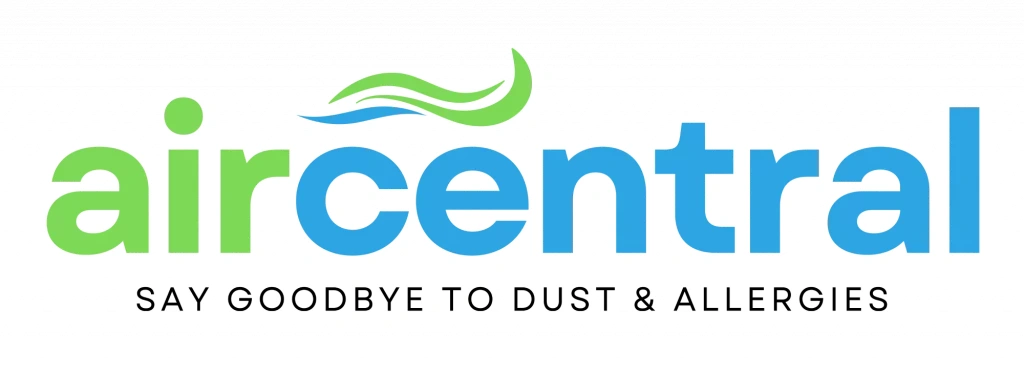
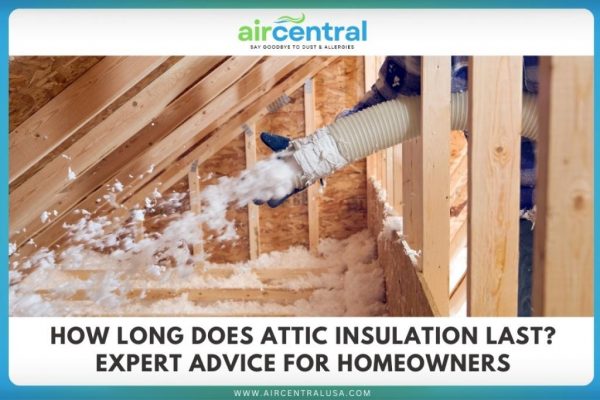
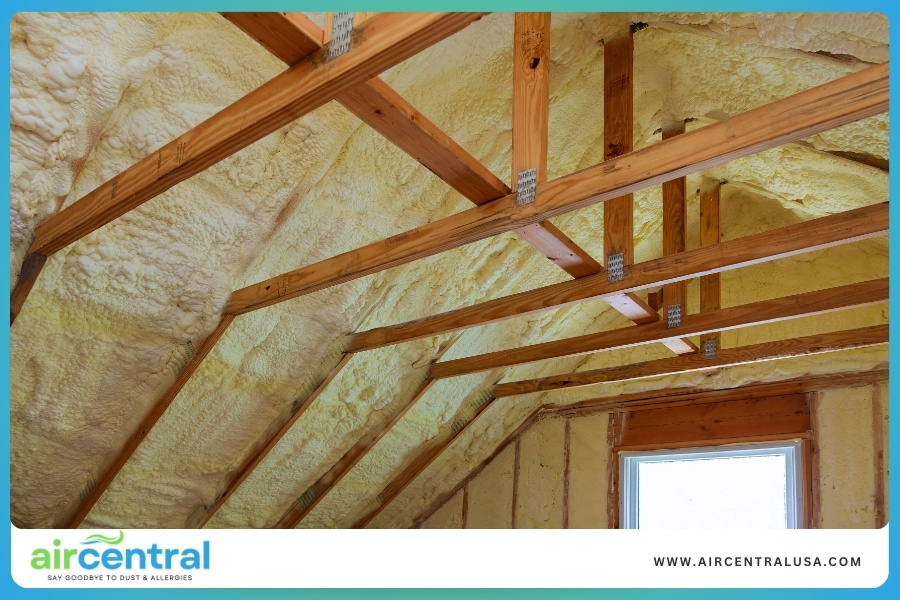
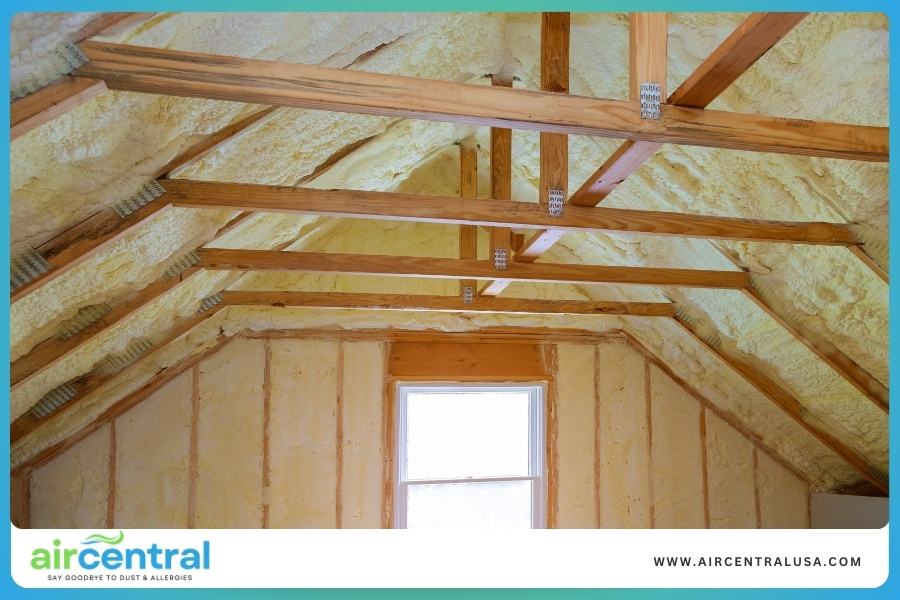
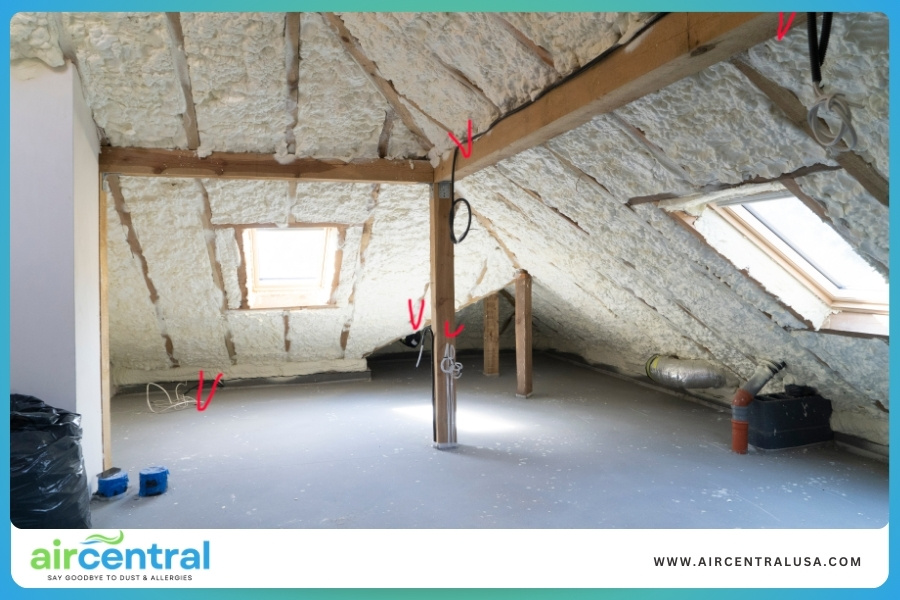
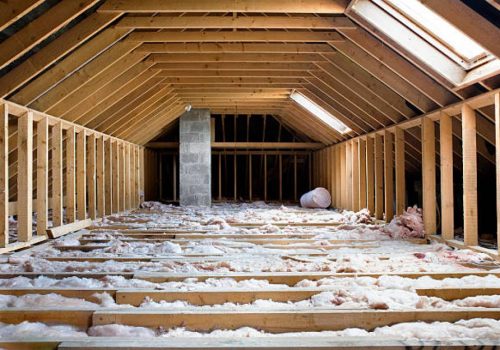
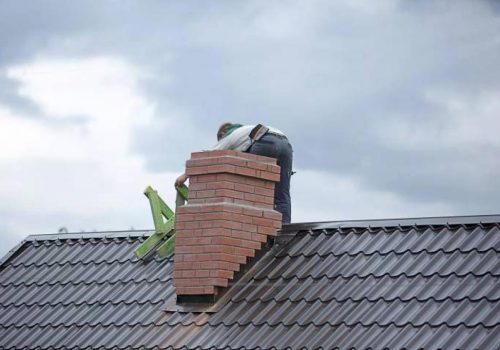
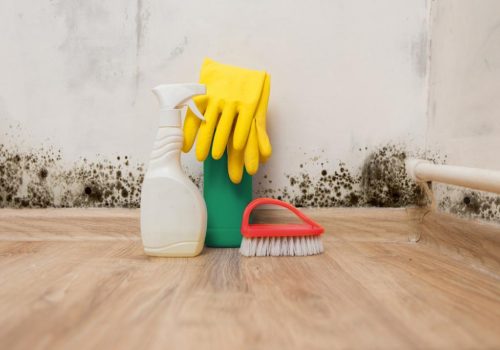
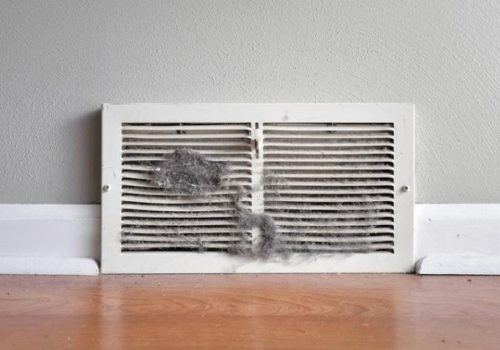
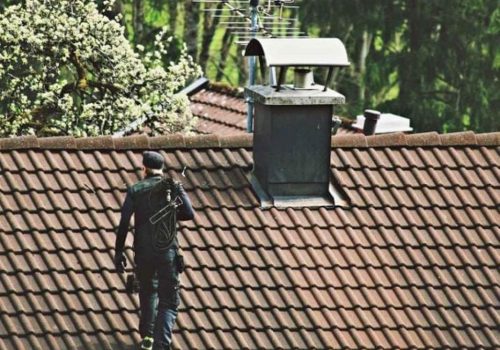
Comments: